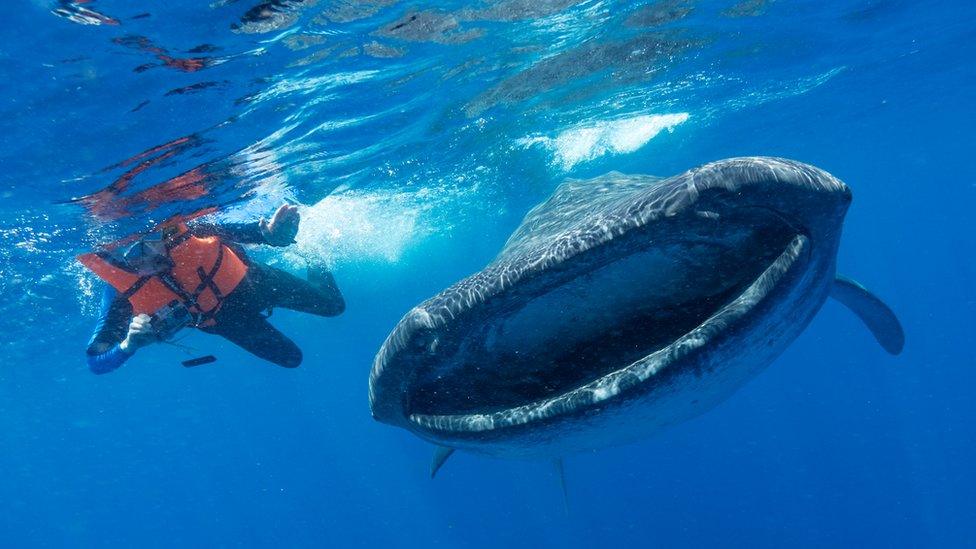Plastic pollution: Snowdon research is a 'wake-up call'
- Published
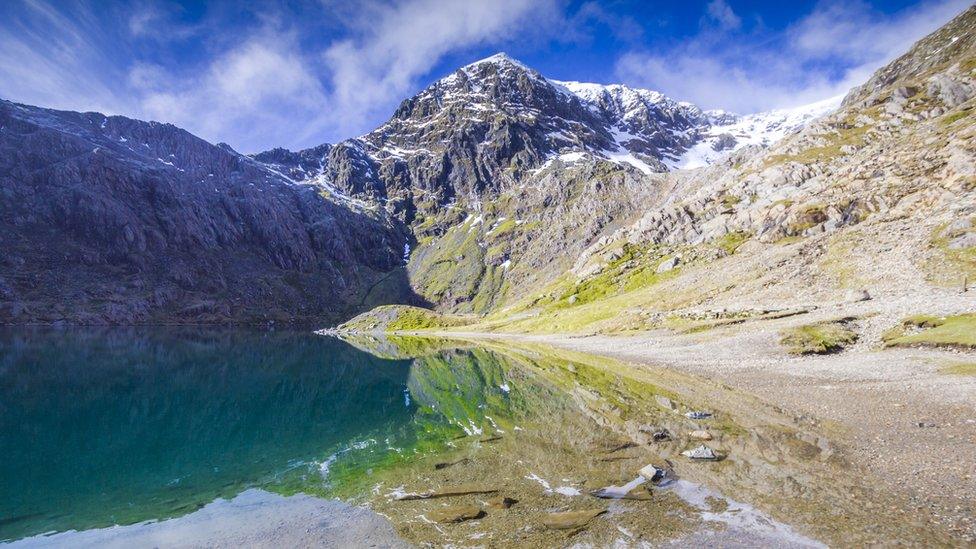
The lake is said to have once contained King Arthur's sword Excalibur - but now harbours plastic
The discovery of microplastic pollution near the top of the highest mountain in Wales is a "scary wake-up call", environmentalists have said.
Traces of plastic have been found in samples collected from Llyn Glaslyn - a remote lake near the summit of Snowdon.
The tiny particles are "most likely" to have been deposited by rain, wetland science expert Dr Christian Dunn said.
A swimmer who gathered the samples will now visit all the UK's 15 national parks to learn more.
Activist Laura Sanderson swam 16 miles (26km) from the source of River Glaslyn - 2,000ft (610m) above sea level - to the sea, last April, collecting water samples along the way.
Results showed an average of three pieces of microplastic per litre from the lake made famous by Arthurian legend. The levels rose to eight per litre at the river's estuary at Porthmadog, Gwynedd.
However the full extent of the pollution is expected to be far worse.
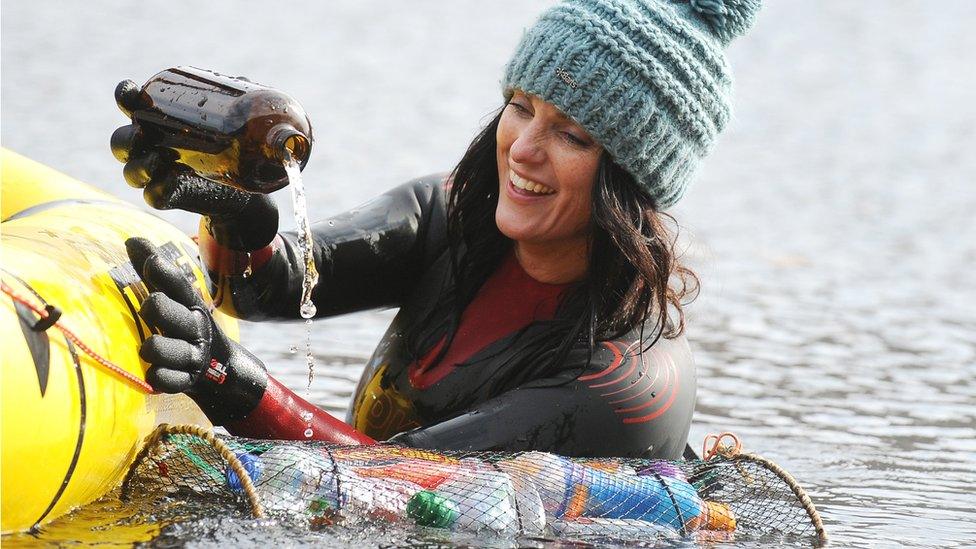
Laura gathered samples in glass bottles from locations along the length of River Glaslyn
The analysis, carried out at the School of Natural Sciences at Bangor University, was deliberately basic with scientists keen to find an easy-to-use method that is affordable, external for schools and colleges.
"The results are scary when you think that this is at the top of a mountain and a very remote location," said Dr Dunn, from Bangor University.
"However a more detailed analysis would almost certainly find more plastic.
"I should be surprised because it is so horrific, but sadly I'm not."
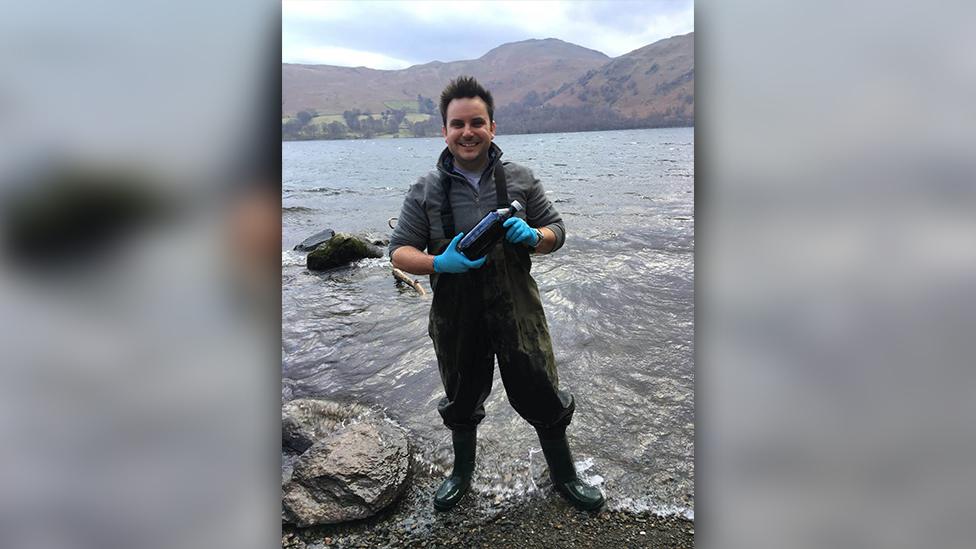
Dr Christian Dunn fears the pollution levels are worse than initial research shows
Scientists believe the microplastics - anything less than 5mm in size - and nano-plastics that are only visible under a microscope, are present in the air and rainfall.
Dr Dunn said this was the most likely cause of microplastic pollution on Snowdon, although particles released from litter breaking down could also be a factor.
"We don't know the full situation but this work will help address that," he said.
"However we have to wake up to the problem of how much plastic we use on a day-to-day basis.
"It's a valuable resource, especially for health care, but there are so many situations where plastic is completely unnecessary."
Snowdonia National Park Authority said litter - particularly plastic bottles and wrappers - is a "real issue" and said teams of volunteer wardens collect nearly 400 bags of litter off the mountain each year.
Having highlighted the issue on Snowdon after braving snow and icy water temperatures, 38-year-old Laura, from Harlech, Gwynedd, will now embark on a UK-wide 620-mile (1,000km) expedition.
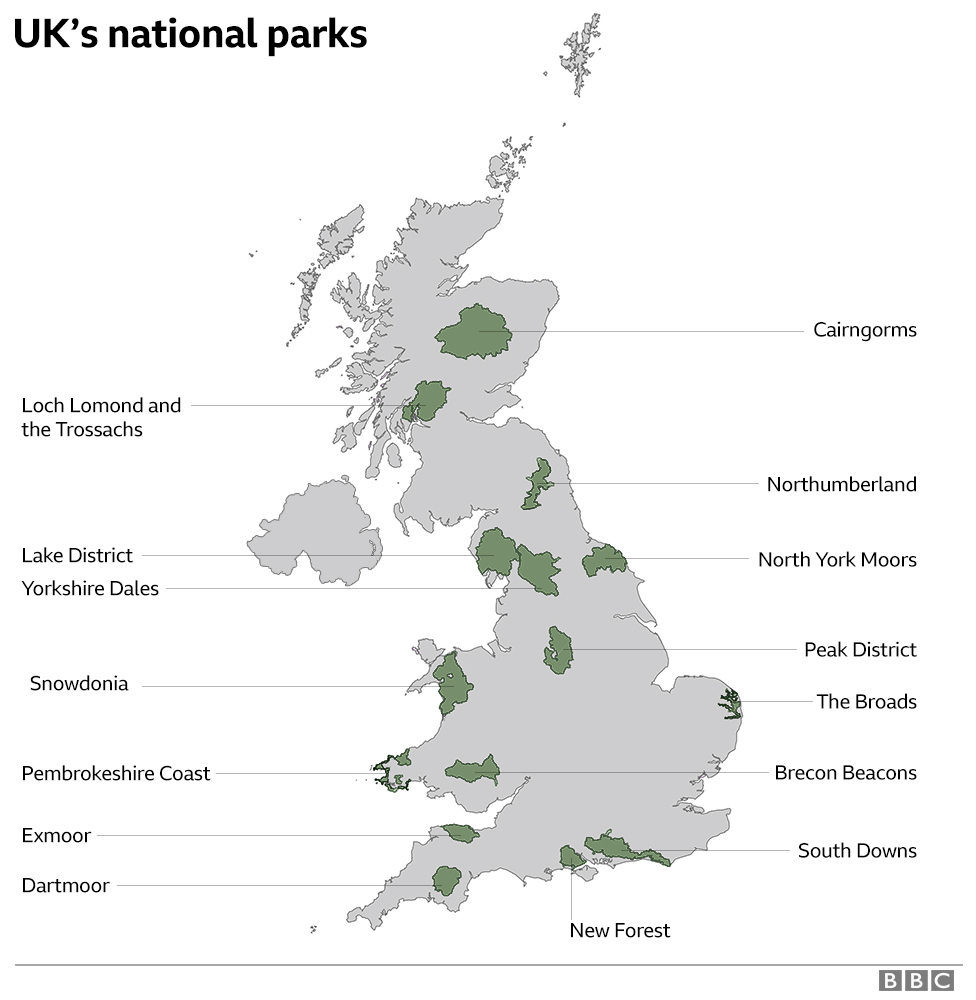

Starting later this month, she will collect samples by swimming through rivers, lakes or coastlines of all 15 national parks, from the mountainous Cairngorms in the eastern Highlands of Scotland to the open plains of Dartmoor in Devon.
The challenge is expected to take up to a year to complete before scientists report on the results.
"We were horrified when we were told the water we'd collected [in Snowdonia] had microplastics in it," she said.
"So now we want to see just how widespread the problem is and look at waterways in all our national parks."
The research is backed by environmental organisation Surfers Against Sewage (SAS).
Charity chief executive Hugo Tagholm said Laura, by swimming, would provide a "unique opportunity" to collect water samples from hard-to-reach locations.


- Published22 August 2019
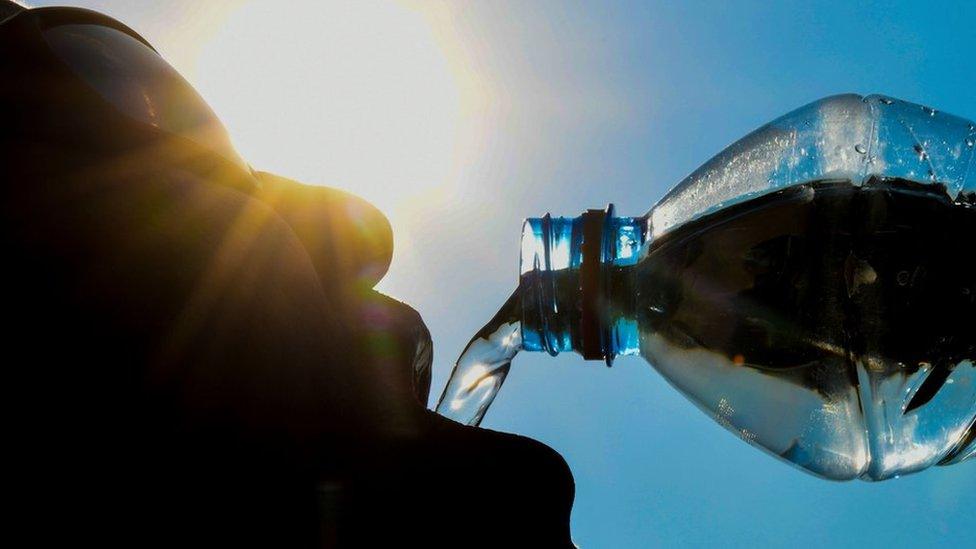
- Published18 August 2019
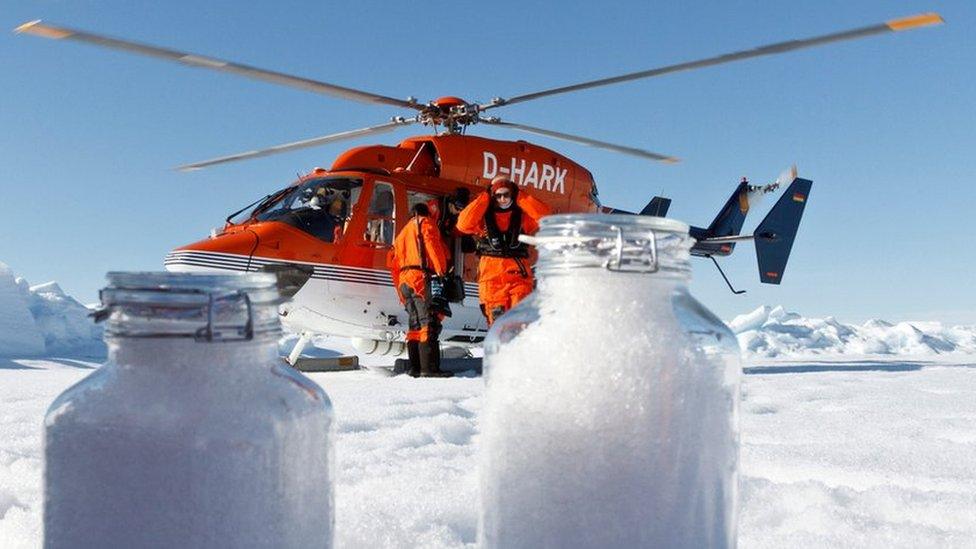
- Published17 July 2019

- Published7 July 2019

- Published16 April 2019
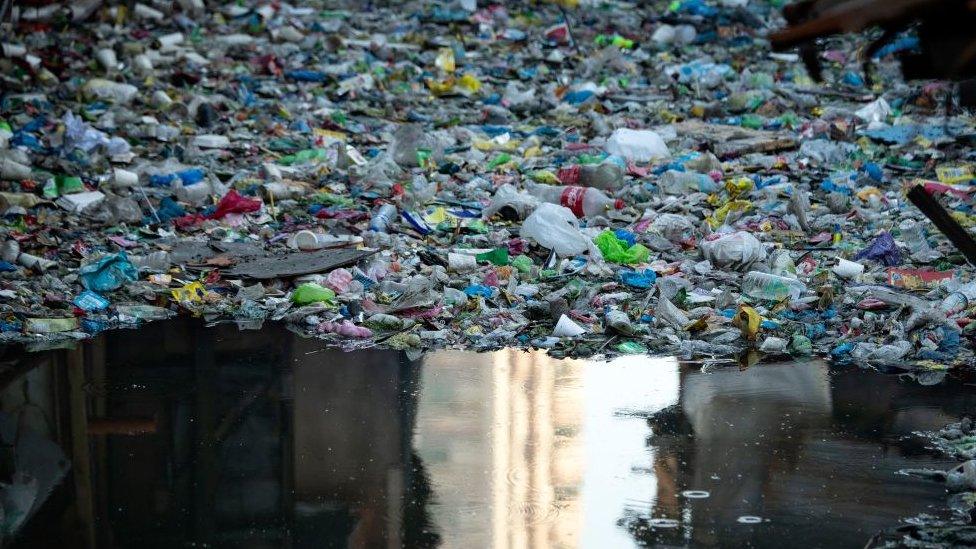
- Published15 February 2019
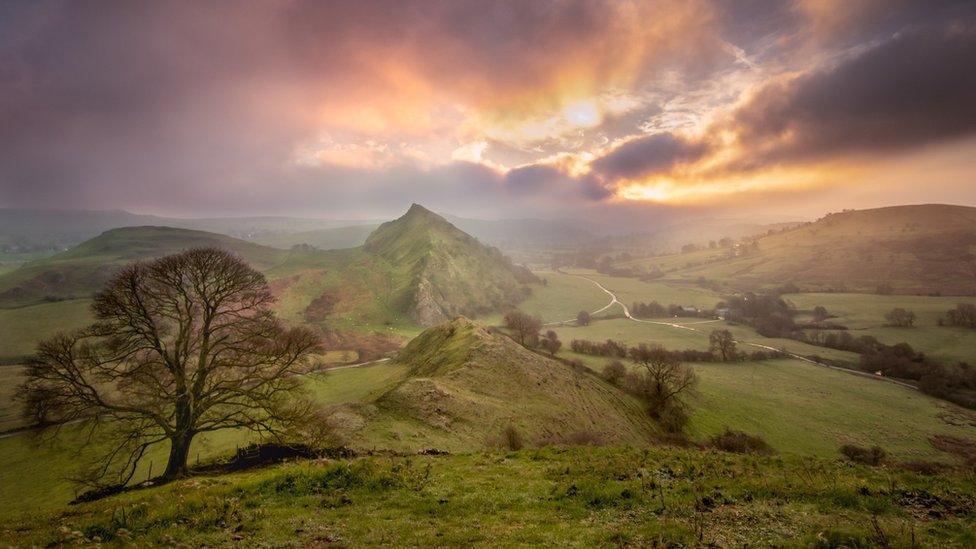
- Published31 January 2019
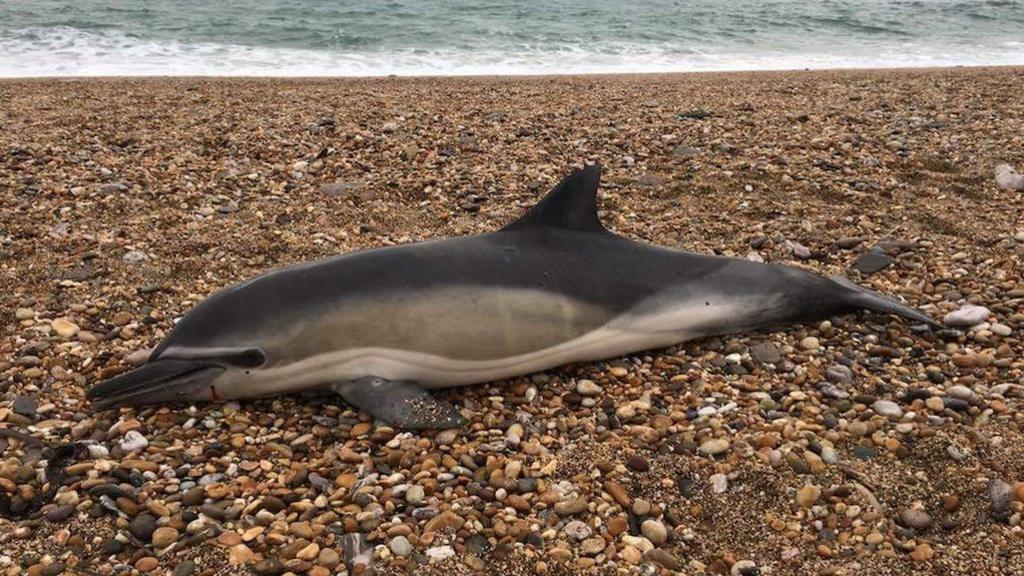
- Published11 January 2019
- Published12 March 2018
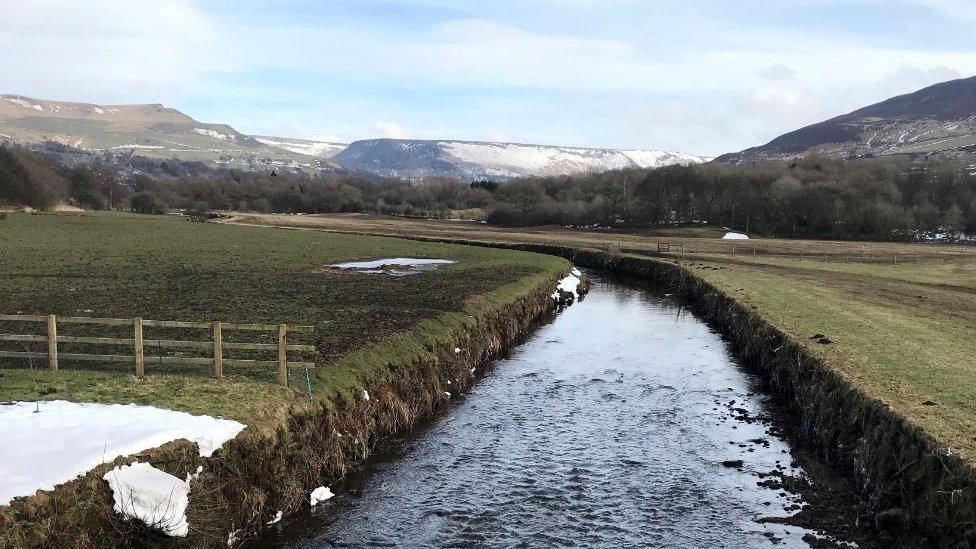
- Published5 February 2018
